Do you know how praise and worship in Christian churches started? Why do we sing an opening or welcome song and then proceed to sing up-tempo songs before finally transitioning into high intimacy worship songs? Is there some kind of pattern that we’re supposed to strictly follow? Or can we modify it to suit our liking and styles?
To best understand the biblical roots of Christian praise and worship, it is necessary to look at the history of Jewish worship, for it was this past manner of worship that the worship of the early church was patterned from.
After the nation of Israel left Egypt under the leadership of Moses, God gave them the law and commanded the construction of a tabernacle where He would meet with them and His people would offer their burnt offerings and sacrifices. The Bible tells us that Moses had a glimpse of what is in heaven and made a complete replica of it (Exodus 25:8-9). In other words, the Israelites built on earth what was built in heaven.
The Tabernacle of Moses
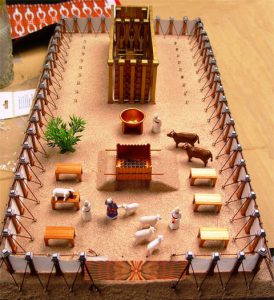 The Tabernacle of Moses is the key to understanding Christian praise and worship today. But what is the tabernacle? The word tabernacle is a translation of the Hebrew mishkan, which means “tent,” “place of dwelling” or “sanctuary.” It was a portable tent and a sacred place where God chose to meet with His people, the Israelites, during the forty years that they wandered in the wilderness.
The Tabernacle of Moses is the key to understanding Christian praise and worship today. But what is the tabernacle? The word tabernacle is a translation of the Hebrew mishkan, which means “tent,” “place of dwelling” or “sanctuary.” It was a portable tent and a sacred place where God chose to meet with His people, the Israelites, during the forty years that they wandered in the wilderness.
Specific instructions about the manner of worship and sacrifice such as what was to be sacrificed and the reason for the offerings were provided for the Israelites in Exodus and Leviticus and the tribe of Levi was set aside to minister as priests.
*The Tabernacle of Moses may be equated today to a place of worship or church building where the believers of Yeshua come together to worship and offer their sacrifices to God. While the Israelites brought animals without blemish to offer to God, we the believers in Jesus bring our sacrifices of praise and thanksgiving, the fruit of our lips.
*The Tabernacle may also be the room or place in the privacy of our own homes where we meet and commune with God, read and meditate on His words and offer songs of praise and adoration to Him. The Bible says that God’s tabernacle or dwelling place is His people (Ezekiel 37:27; 1 Corinthians 3:16; Revelation 21:3).
Parts of the Tabernacle
The Tabernacle of Moses had three distinct sections: the outer court, the inner court or holy place and the most holy place also called the holy of holies. So let us take a look at them to see what each one corresponds to in terms of how praise and worship are done in Christian churches today.
A. The Outer Court
At the outer court are the gate, the brazen altar, and the bronze laver.
1) The Gate or Entrance
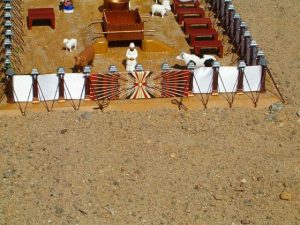 The tabernacle had only one gate or one entrance. A person could not simply come from any direction into the tabernacle as he pleased – he had to enter through the one gate which was always located to the east. Why? This was to inform the Israelites that there was no other way they could come to God except in the way He prescribed.
The tabernacle had only one gate or one entrance. A person could not simply come from any direction into the tabernacle as he pleased – he had to enter through the one gate which was always located to the east. Why? This was to inform the Israelites that there was no other way they could come to God except in the way He prescribed.
*Jesus Christ is the representation of the one gate as the only way through which one could worship God and fellowship with Him. God is using the Tabernacle of Moses to tell us today that we too, must come to God only through the way He has provided for us – Jesus Christ. The Bible tells us that Jesus is the way by which we can come to the Father (John 14:6) and He is the gate through which we are saved (John 10:9).
*Note: This is the part of praise and worship where we sing entrance or gate songs to enter into His courts.
2) The Brazen Altar or Altar of Sacrifice
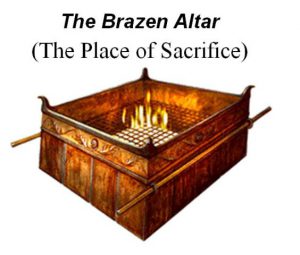
The brazen altar serves as a reminder of man’s sinfulness and his need for a blood sacrifice in order to fellowship with a holy God.
*Jesus Christ became the ultimate sacrifice through His death so there’s no need for the believers today to offer animals (Mark 14:24; John 1:29; Hebrews 10:11-12, 18). Instead, praise songs are presented as offerings before the Lord; we bring to the Lord sacrifices of praise which goes up to His throne as a sweet aroma.
*As we continue to sing praises to the Lord our God, His presence starts to come down, dwell and manifest in the midst of His people. The Bible tells us that God inhabits the praises of His people, He is enthroned in our praises (Psalm 22:3).
*The altar which was raised on a mound of earth that is higher than its surrounding furniture is a projection of Christ, our sacrifice, lifted up on the cross, His altar, which stood on mount Golgotha (John 8:28; John 12:32).
3) The Bronze Laver
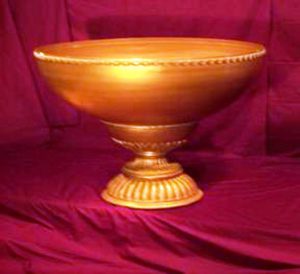
The bronze laver was a circular bowl filled with water which was made from the mirrors of the women who served at the entrance to the Tent of Meeting. This is a reminder that the people need cleansing before approaching God, so the priests wash their hands and feet before ministering to the Lord.
While it is at the brazen altar where priests atoned for their sins through a sacrifice, they cleansed themselves at the laver so they would be pure and not die before a holy God.
*The application for Christians today is that we are forgiven through the work of Christ on the cross, but we are washed through His Word. We must allow ourselves to be washed daily in the Word of God and be cleansed so that we can serve and minister before Him (Ephesians 5:25-27; Hebrews 10:22).
*The Tabernacle of Moses is a pattern for the praise and worship of the believers in Yeshua (Jesus) today. We enter His gates and come into His “courts” with praise (Psalm 100), singing up-tempo songs, clapping, dancing, rejoicing, giving wave offerings and shouting for joy. In this way, we are offering ourselves as “living sacrifices on the altar of God” (Romans 12:1). We are also being “washed by the water of the Word” as we sing these songs based on the Scriptures represented by the laver.
B. The Inner Court or Holy Place
After the priests have washed their hands and feet at the laver, they can now enter the holy place, the first room in the tent of the tabernacle. In the holy place were three pieces of furniture: the menorah, the table of showbread, and the golden altar of incense.
1) The Menorah also called the Golden Lampstand or Candlestick
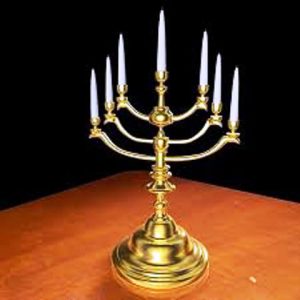
The menorah which is the only source of light in the holy place had a central branch from which three branches extend from each side to form a total of seven branches. Without the menorah to provide light in the holy place, the priests would be moping around in the dark.
*Jesus today is our Light (John 1:9; John 8:12; John 12:46). The main branch in the lampstand represents Jesus Christ and we the believers are represented by the six branches that extend from the main branch. The branches serve as a picture of Jesus’ description of our relationship with Him. He is the vine, we are the branches and without Him, we can do nothing (John 15:5).
*And since we are now living as children of light (Ephesians 5:8), drawing our source from Jesus the true light, we are commanded to “let our light shine before men so that they may see our good deeds and glorify our Father in heaven” (Matthew 5:14-16).
*Jesus is our Light who will lead us into the presence of God during praise and worship. While the priests prepare themselves to enter into the presence of God to offer on behalf of the nation of Israel, we the believers continue to sing songs of praise and adoration to the Lord as we gradually enter into the dwelling place of God where we can finally behold His glory and majesty.
2) The Table of Showbread also called Bread of Presence
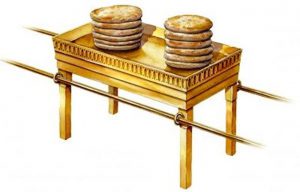 The table of showbread has 12 loaves of bread representing the 12 tribes of Israel; it is a picture of God’s willingness to communion and fellowship with man.
The table of showbread has 12 loaves of bread representing the 12 tribes of Israel; it is a picture of God’s willingness to communion and fellowship with man.
The Bible says, “Jesus is the bread of life” (John 6:35, 49-50). Jesus’ coming down to earth from heaven to give eternal life to those who would partake in it was a demonstration of God’s desire to fellowship with man.
*Today, we celebrate the Lord’s Supper as one of the only two ordinances for the church, to remember the suffering and death of Jesus Christ for the redemption of mankind and to declare that He is coming again.
3) The Golden Altar of Incense
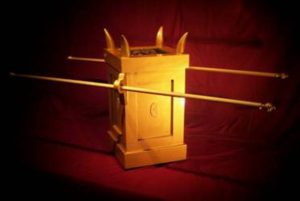
The golden altar of incense should not be confused with the brazen altar. The golden altar of incense was located in front of the curtain that separated the holy place from the holy of holies.
The priests are commanded to burn incense on the golden altar every morning and evening, the same time that the daily burnt offerings were made and the incense is to be left burning continually throughout the day and night as a pleasing aroma to the Lord.
*The golden altar is a representation of Jesus Christ, our intercessor before God the Father, while the incense was a symbol of the prayers of the intercession of the people going up to God as a sweet fragrance. Since we have been forgiven of our sins through the blood of Christ, we can now come boldly to Him in prayer in Jesus’ name (John 14:13-14).
*As we enter the Holy Place from the outer court, a transition takes place. The music slows down and we feed further upon the word of God, the Bread of Life Himself. Our minds are illuminated by the fire of the Holy Spirit, represented by the lampstand. We place “fresh incense” on the altar as we “sing in spirit” with “tongues of angels.” The fragrance of pure worship “permeates the veil” and pleases God.
C. The Holy of Holies or the Most Holy Place
The holy of holies is where the Ark of the Covenant is, covered by a lid called the “mercy seat.” It is where the glory of God is – His very presence.
The holy of holies was the most sacred room which no ordinary man could enter. It was God’s special dwelling place in the midst of His people. Between the holy place and the holy of holies was a veil or thick curtain to separate them.
The veil was essentially there to shield a holy God from sinful man. It was a picture of the barrier between man and God, showing that the holiness of God could not be trifled with. The veil was placed there to make sure that no man could irreverently enter into God’s awesome presence.
The very presence of God remained shielded from man behind the veil throughout the history of Israel. But when Jesus died, it was torn in half from top to bottom exposing the Holy of Holies (Matthew 27:50-51). No matter how shocking this was to the priests ministering in the temple that day, it was indeed good news to us as believers.
The torn veil illustrated Jesus’ body that was broken for us, opening the way for us to come to God. We can now boldly enter into God’s presence, “the inner sanctuary behind the curtain, where Jesus, who went before us, has entered on our behalf “ (Hebrews 6:19-20).
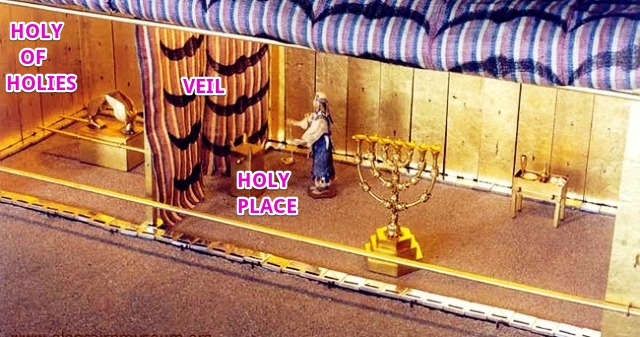
*As we enter into the holy of holies during worship, we are consumed by a cloud of glory, fall down before the Throne of the Almighty, and worship Him in spirit and in truth (John 4:24) as a royal priesthood, purchased by the blood of Jesus. It is at this point during praise and worship that each worshiper can now express his adoration to God, to enjoy and experience God’s awesome presence, comfort, and loving embrace.
*It is the goal of every worshiper to come into the very presence of God. On our way to the most holy place, no one can do it for us. We need to press through all the distractions to get to the place where we are face to face with God. We need to keep pressing in and pressing in.
*I personally believe that anyone who truly experiences God during worship will never be the same again because only a personal encounter with God can cause a transformation that is almost always impossible to take place under any ordinary circumstances.
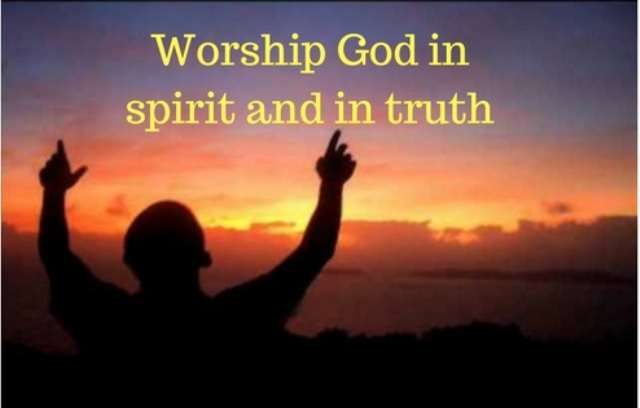
Conclusion
Although there have been significant developments in the way the Christian Church throughout the centuries has conducted praise and worship, it appears that the manner of worship seen today remains to be patterned from the way God instructed His people to come into His presence to present their sacrifices and burnt offerings.
The Christian praise and worship that we know and still practice today is biblical; it has its roots in the Tabernacle of Moses, which God asked His people to construct to be His dwelling place as well as a place for His people to commune and fellowship with Him.
Recommended Resource: Principles of Worship: The Study of the Tabernacle of Moses
This manuscript was previously published in 1990 by Alive Ministries as a Bible conference guide. This version includes significant revisions. You will find the principles here dynamic. This is not your typical tabernacle book.
“The tabernacle,” Small says “is a template for prayer and worship, a kind of roadmap into God’s presence, a call for balance in prayer and worship.” There is an old saying that testifies to the relationship between the Testaments: “The New is in the Old concealed, and the Old is in the New revealed.”
When the New Testament writers penned their histories and letters, they referenced the Law, the Prophets, and the Wisdom Literature of the Old Testament. The New Testament is rooted in the Old Testament.
It is hardly understood without it. Paul says to the Romans that the things “written before were written for our learning” (Romans 15:4, NKJV). In the first letter to Corinth, he calls the events of the Old Testament “examples… written for our admonition” (10:6, 11).
The Law and the Tabernacle, both given at the same time and on the same mountain, are a ‘schoolmaster” to bring us to Christ (Galatians 3:24). Jesus reminds us, “Think not that I am come to destroy the law, or the prophets: I am not come to destroy, but to fulfill it” (Matthew 5:17).
The Old was a shadow of the things to come. It is in the New revealed.

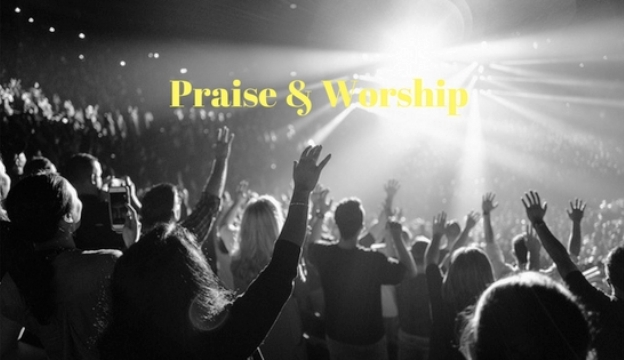
Thanks for the teaching. I am humbled and blessed, in fact.
God bless you abundantly. l want to learn more.
Hi Harriet,
I am so glad you have been blessed by this post. Please visit us from time to time.
God bless!
I am really blessed and now I understand the Tabernacle….
I pray that God will continue to inspire you with his words for you to share with other believers…
Blessings
Hey Loksie,
Thanks for visiting and I’m glad you found this article helpful in understanding the Tabernacle of Moses from which Christian praise and worship was patterned from.
Isn’t it amazing how Moses and the Israelites built on earth that which was built in heaven? It is believed that Moses received this revelation while spending 40 days at Mount Sinai to receive the stone tablets containing the 10 commandments from God.
Oh, and thank you for including me in your prayers, it means a lot. By the grace of God and the wisdom that He so abundantly bestows, I hope to continue sharing inspirational and insightful articles that will not only encourage others but also to help them grow and mature as Christians.
Shalom!
Hi Alice
A very good write up, I have learnt some new things here, but wanted to suggest a correction in one of your comment you mentioned about worship leaders leading people into presence of God, I believe we cannot enter God’s presence because we are unholy and imperfect but as Heb 10:19 says only through Jesus and His blood we all can enter His presence
Hello Nischal, it’s so nice for you to come by and drop a comment.
I really appreciate you pointing out that the only way we can enter into God’s presence is through Jesus and Jesus only. That is accurate, because He’s the only mediator between God and men (1 Timothy 2:5), and He’s the only way to the Father (John 14:6).
I think I did not elaborate well enough what I mean exactly in saying that worship leaders lead people into the presence of God. When I said that it’s the job of worship leaders to lead people into the presence of God, what I meant is that, by ministering to the congregation through high praise and worship songs, worship leaders help the congregation get their focus on God and away from their problems.
People who come to church have their own burdens and struggles but worship songs can minister to them and can touch their hearts. Led by the music team, they will eventually get to the place where the presence of God is. But it is only through the blood of Christ that we gain access into the presence of God, not anything else.
Blessings!
Thank you for sharing this information with so much clarity. I can now visualize the Tabernacle of Moses and have knowledge of what each segment stands for.
I love that you mentioned – a Tabernacle can be any room or place in our own privacy where we can communicate and meditate God’s word.
I have definitely experienced God’s presence in my offering of worship, and it is the most beautiful and fulfilling moment, that I never want to let go of.
I am a new Christian, and Id like to ask you…does it matter if we only worship God on our own, or is it important to worship among other believers as well?
The praise and worship part of the church service is my favorite part, second to the message/sermon because it is this part that sets the tone for the entire service. This is where we offer to God the fruit of our lips and also where we come face to face with God in His holy presence in the most holy place.
Yes, we can set up our own Tabernacle in our home where we make it a daily habit to meet with God, worship Him and pour out our hearts to Him. It’s a great privilege for us believers to experience God’s awesome presence even in the privacy of our own homes.
However, our personal prayer and worship at home should never replace corporate or congregational prayer, fellowship and worship. If we really want to grow in our spiritual life, fellow shipping and worshiping God with other believers in a Church setting plays a major role. The word of God in Hebrews 10:25 exhorts us to not forsake our assembling together. We come together in the spirit of love and unity not only to worship God and listen from Him but also to encourage one another to continue in their faith. Believers are to edify, encourage, support and uplift one another.
Thanks for visiting Xiadani, shalom and God bless!
This article is very well done Alice. A very clear explanation of the parallels not only between the Old and New Testaments but also between the Jewish and Christian faiths.
I loved the illustrations as they make it quite easy for us to visualize what you are talking about. Most of us have never been in a Jewish Tabernacle or better still the Jewish Temple in Israel.
I was very familiar with most of what you were saying here but this makes it much more clear. This is both informative and educational and I am sure that anyone reading this will be well satisfied and more knowledgeable.
Hi Frank, Thank you for stopping by.
I haven’t been to Israel yet nor visited a Jewish Temple but the Bible tells us that there will come a time in the future when every believer will go the Temple in Jerusalem to worship God and offer their sacrifices. It’s pretty exciting, don’t you think?
By the way, praise and worship are the only things to be done when we are in the presence of God and that’s why I believe that the praise and worship we do for God in the privacy of our own homes or together with fellow believers at church are just preparatory steps for the worship that we will be offering to God when we will be with Him in heaven for eternity.
Indeed there is much to learn from studying the Old Testament. Shadows and types teach us what was to come, and how the revelation of Christ is a fulfillment of portents earlier.
I was a worship leader for years on various churches. The most important thing to me was not the song choices, or how many people sang. My responsibility was to make sure I WAS truly honoring and reaching out to God in spirit and truth as I sang and played.
Sure would be something to be able to really see the old temple as it was. What a huge, impressive metaphor for the salvation to come…
Hi TJ,
As some preachers always say, “The Old Testament is the New Testament concealed and the New Testament is the Old Testament revealed.” We can never fully understand the New Testament without looking into what the Old Testament has to say because the Bible has only one theme, the redemption of mankind through our Lord and Savior Jesus Christ.
Having led different congregations in worship, I’m pretty sure you know that a worship leader carries a huge responsibility. Because in order to lead the congregation into the presence of God, a worship leader must have experienced God’s presence firsthand.
Shalom!
Thanks for the great post. There is a lot of information that I have work through. I appreciate the great article and can tell that a lot of work and research went into putting this together.
Biblical Christianity is a large subject, but at the same time very simple.
God, being the Creator of everything, created music to be offered to Him as a prayer of thankfulness and honour. It’s always a blessing to be able to praise God for His Grace and Love toward us.
Music is just one of the ways by which we communicate with God; we praise and honor God through music, we bless His name through music, we express our love and thankfulness through music and we declare His goodness through music.
Thanks for visiting Jerry, God bless!